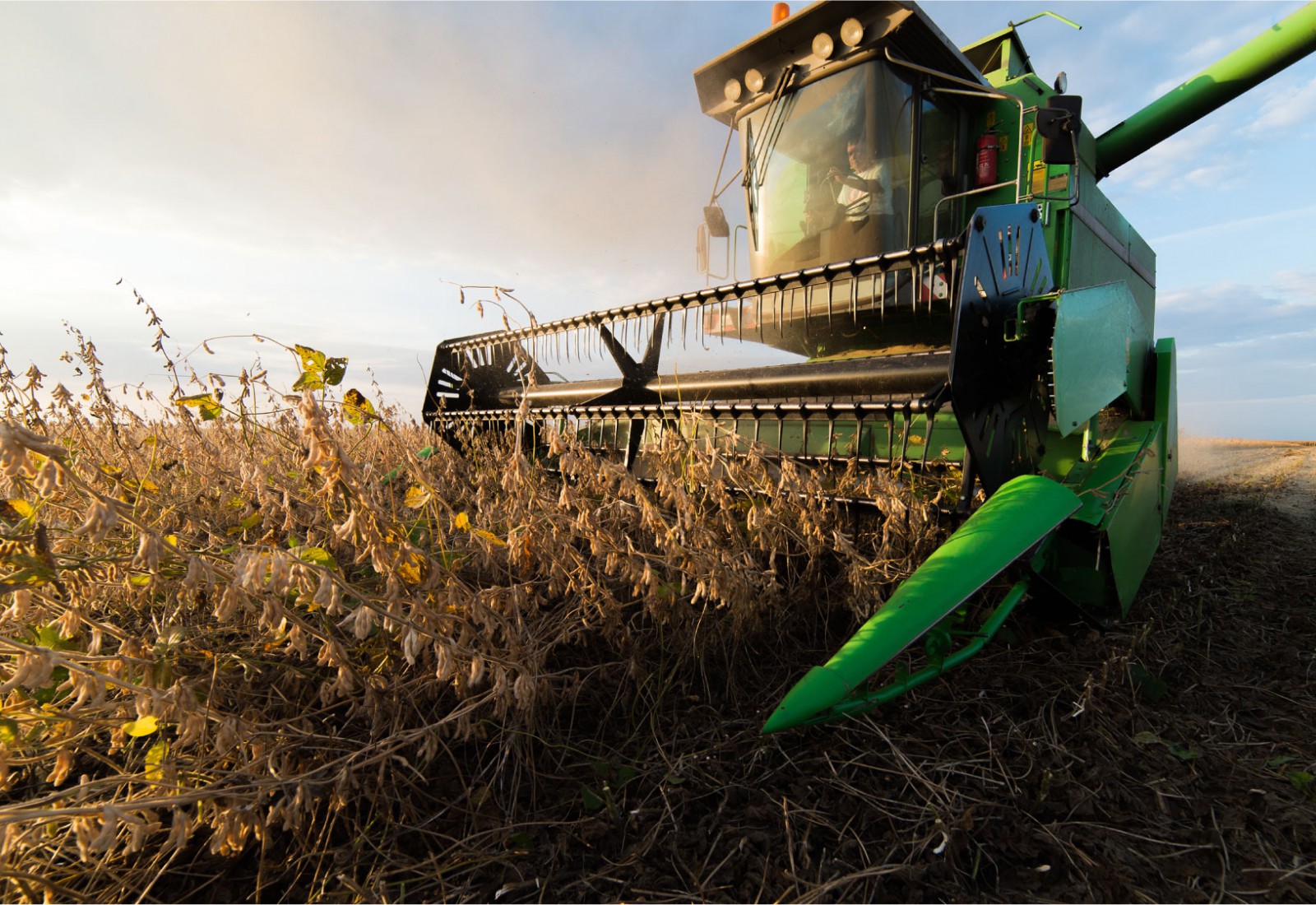When is the Best Time to Harvest Soybeans?

Is there an ideal time for harvesting soybeans? How will growers know when the time has come? What happens if soybeans are harvested too early?
By John Dietz
With yet another record soybean crop to be harvested in a few weeks on the southern Prairies, more than ever it is riding on the days leading up to harvest.
That’s true for buyers, as well as growers.
Working out of Starbuck, Manitoba, sales agronomist Dan Friesen is on the ”buyers side” of the equation for Richardson Pioneer. He wants his growers to get the best possible return on their 2017 soybean investment.
“We work with farmers to manage their soybean crops, helping them keep their fields free of weeds and healthy throughout the year. Then we also provide recommendations as to when harvest management tools should be implemented,” Dan says.
A typical soybean harvest begins in the third week of September. Depending on weather, and other factors, it may be a month until the last bean is off.
The ideal storage moisture for a dry mature soybean is 14 percent. Wetter, and it could spoil in storage; dryer, and it could split while being handled. Both possibilities reduce value for the grower and the buyer.
A few soybeans are babied at harvest with an air reel header, so they never hit the ground. Most are OK with the standard flex or draper header. It doesn’t really matter whether a rotary or conventional combine separates it from the stems and pods.
Going into storage, of course, they would like to be trundled along, cradled on conveyor belts. A nicely mature soybean is a little brittle. It doesn’t like steel augers at all, nor does the buyer.
Timing
But timing can be tricky; it’s not an ideal world. Before harvest, weeds, weather, harvest capacity, and evenness of the fields need to be considered. They interact, so the timing is like a balancing act.
As the grower, you can adjust a schedule for weather (somewhat) or you can intervene with assisted-drydown, and you may have an option for aeration in storage.
“In past years, we’ve had fairly good fall weather and fairly good, even crops. For my area, desiccation and pre-harvesting hasn’t been extremely common, but it is an option,” Friesen says. “One might spray a quarter of the fields, to get them ready to harvest. By the time those are done, if there’s no weed or weather issues ahead, they keep rolling into the next fields.”
Desiccation becomes important when fields have issues with uneven maturity.
Growers have two types of chemical options for prepping the fields. Timing is important to the grower and the buyer.
Respect the labels, Friesen says, especially for timing between application and harvest. Buyers need confidence that chemical residue will not be detected.
“It is definitely beneficial to bring the field in line (for maturity and dry down) so they get the beans into the combine in a timely fashion. A late flush of weeds, coming along too late for herbicide application, is another common reason to pre-harvest,” he says. “You kill the weeds, so you can combine at a comfortable speed and limit green material in the sample.”
Late August or early September is a good time to scout the situation. You can avoid a pileup by selecting a field or two to combine a little earlier, with assisted drying, while the rest cure naturally.
A number of products can be used. They can be applied when the bean crop has lost 75 to 90 percent of its leaves. At that point, the bean plant will be fairly brown or tan. The pods will be loose and shake like rattles.
One type of harvest-aid can come from a pre-harvest weed control product (usually glyphosate).
Pre-harvest weed control shuts down growth, and tends to work a little slower than desiccating. That can increase the flexibility for harvest timing.
“If you choose a pre-harvest weed control product, you’re waiting 10 to 14 days to start combining. And, if you’re delayed four or five days, that crop probably still will [have enough moisture and] be OK.”
The desiccant option is a little different. It targets dry down of the crop, not the weed control, and it works faster so the “window of application” is smaller.
“With desiccants, usually wait six to nine days to harvest, depending on how hot it is and how much exposure the sprayed crop gets to sunlight. With the desiccant option, you don’t want to wait too long because the crop can get too dry, and you could get boxed in with weather,” Friesen says.
He adds, “If you’re unsure, ask your bean supplier to confirm what product would be a safe option to use.”
Timing on harvest day also is variable, definitely affected by temperature and humidity.
Generally, fields are wet in the morning and dry for the afternoon. It probably won’t matter to the seed in the pods, but damp soybean stalks can be tough to cut.
“That really, really slows your speed. The tougher it gets, the harder the combines work. That’s the most common limiting factor,” he says.
“On balance, timing the soybean harvest is a complex game of give and take. There are factors you can control, and factors you can’t. Again, if it’s close and you’re unsure, ask your bean supplier or agronomist to help make the call.”


